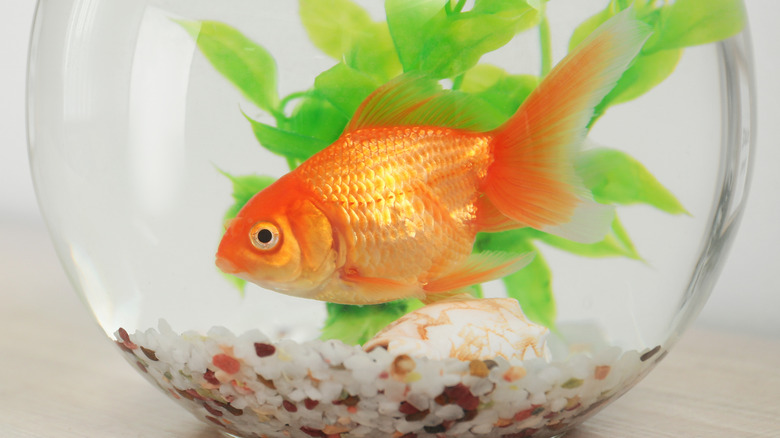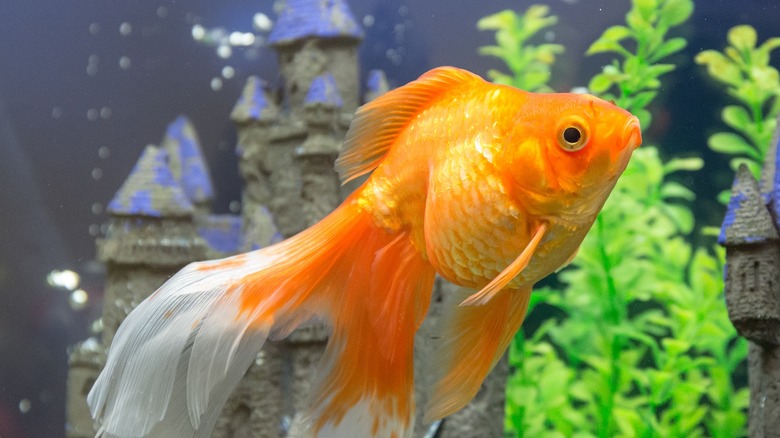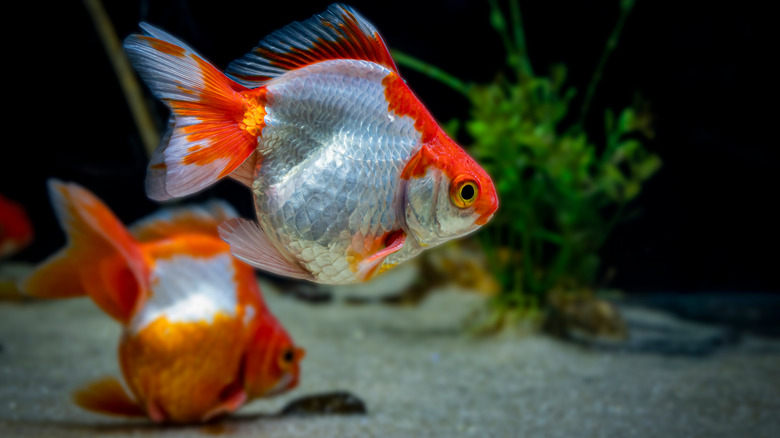The Strange Consequence Of Leaving A Goldfish In A Dark Room
According to the American Veterinary Medical Association, the United States is becoming increasingly pet-happy. The association estimates that, by the year 2030, the nation will have around 82 million pet cats and a dizzying 100 million dogs.
That's an awful lot of furry friends, by anyone's standards. Feline and canine companions remain some of the most popular pets around the world, but rather less conventional species are also on the rise as pets, too. Further American Veterinary Medical Association data reveals (via Veterinarians) that 13.3% of U.S. homes had an exotic pet in 2016, an increase from 12.7% a decade earlier.
The goldfish is another staple pet. These gloriously-colored fish may not appear to be the most electrifying of pets, happily bobbing along in their tanks and, let's be honest, not going a great deal of anything else. It's important, however, not to underestimate the many unique characteristics of goldfish. For starters, a very interesting thing happens to their famous color if they remain in a darkened room.
Goldfish: a surprisingly large, colorful problem
Goldfish could be regarded as being rather vanilla members of the popular aquarium set. As attractive as their coloring may be, they lack the stunning color schemes of many exotic fish, and have been so ubiquitous as pets that they risk being overlooked and underappreciated. The seemingly humble goldfish, however, is far more extraordinary than you may think.
They are much more than small, "boring" fish. According to Guinness World Records, the world's largest goldfish (at the time) were owned by Australia's Paul Schafer. The duo, the outlet reported in October 1997, were a comet and fantail goldfish, each a remarkable 13 to 14 inches long and weighing in at approximately 2 lbs apiece. In July of 2021, Burnsville, Minnesota's Twitter account issued the plea, "don't release your pet goldfish into ponds and lakes! They grow bigger than you think and contribute to poor water quality by mucking up the bottom sediments and uprooting plants," after several vast specimens were discovered in Keller Lake.
BBC News added that these golden menaces breed incredibly quickly and so endanger other aquatic denizens, officially classing them as an invasive species in Minnesota. In short, it's important to be a responsible goldfish owner and keep them in their homes. It can also be important not to keep them in the dark; if you do, they can gradually lose their iconic coloring.
Goldfish struggle to keep their tans
The Animal Rescue Professionals Association states that goldfish breeding began in China over 1,000 years ago. The breeding process, over such a long time, resulted in far more varied colorings than the familiar gold. From black to red, various different tones of this freshwater fish are documented.
Goldfish that are kept out of the reach of sunlight, the outlet goes on, can lose their bright coloring. Chemist Anne Marie Helmenstein explains, per ThoughtCo., that their unique coloring will fade because of the chromatophore cells, which develop that fish's specific pigment. A goldfish's diet helps the chromatophores in this endeavor, as some such pigments are found in its preferred foods (such as shrimp), but light exposure is crucial for the cells to continue to be produced. The "stock" of colorful cells, then, is not replenished, meaning that the fish's color will degrade gradually like a flashlight with weakening batteries. The effect is so drastic that it's reportedly even noticeable over the course of just hours. "Goldfish kept indoors without full-spectrum lighting are also less-brightly colored than fish exposed to natural sunlight or artificial lighting that includes ultraviolet light," Helmenstein writes.


